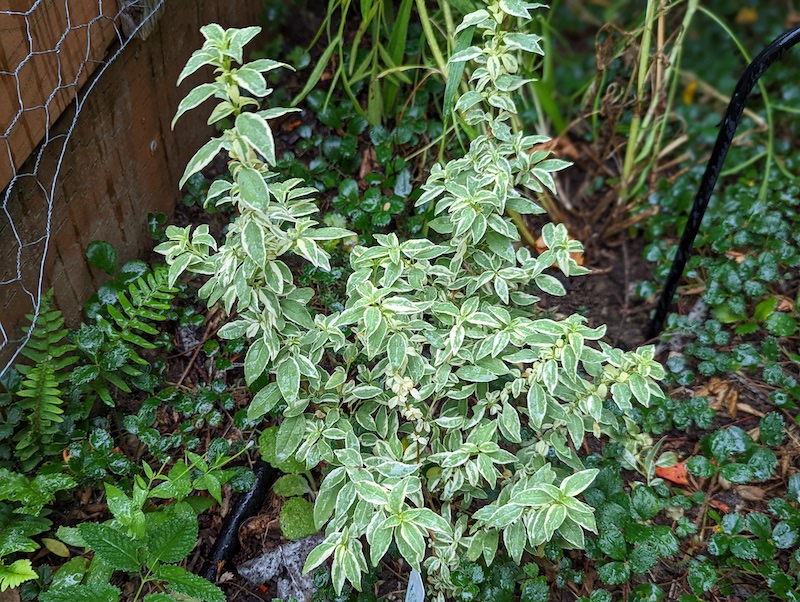Fuchsia is a tender perennial, most often grown as a flowering annual. The range of flower colors is the composite of the color fuchsia: red, pink, purple, and white. The flowers can be extremely blousey and dramatic as in the cultivar F. ‘Seventh Heaven’ or very minute and understated as in F. boliviana ‘Alba’. Whether growing as a trailing hybrid or an upright hardy variety, there is a fuchsia to fit just about every garden.

What You Need To Plant Fuchsia
- Garden spade or transplanting shovel
- Compost, shredded leaves or other organic material for mulching
- A site that has part to full to part shade
- Slow-release fertilizer formulated for flowering plants
- Watering can or hose
Where to Plant Fuchsia
The shade suits Fuchsia the best. These tender perennials originate from tropical regions of Central and South America. Thriving in cooler and more humid areas such as the Andes Mountains, Fuchsias will tolerate sun only in the cooler growing regions and only early in the day in most other places. The soil must be well drained, moisture retentive, and rich in nutrients, with a loamy texture. Most Fuchsias are grown in containers where these requirements can easily be met. The root systems are very shallow and fibrous and do not become invasive to surrounding plants or buildings.

Fuchsia Spacing
Fuchsias grow either as a trailing plant or an upright shrub. Both types need plenty of air circulation to prevent pests and diseases. Aphids, mildew, and fungal diseases are the most common problems of Fuchsia. Depending on the type, Fuchsia can grow to be just 6 inches tall or to 9 feet tall, as a hedge. A good rule of thumb is to plant Fuchsias as far apart as the expected plant width. If a plant tag says that the plant will grow to a width of 18 inches, then space each plant 18 inches apart, measuring from the middle of the plants. This is called planting on center. Fuchsias in containers may be spaced much closer, generally not more than 6-8 inches on center. Regularly pruning dead, diseased, or dying branches and foliage will maintain good air circulation. All trailing varieties grow best in a hanging basket where the branches can spread as far as needed.
Steps To Plant Fuchsia
Step 1 - Dig a hole twice as wide and as deep as the plant was grown in the pot.
Step 2 - Gently take the plant out of the pot and tease apart any roots that are circling the container.
Step 3 - Place the Fuchsia so the growing point is level with the soil. Gently backfill the excavated soil into the hole, firming gently around the plant to get rid of large air pockets.
Step 4 - Scatter a generous handful of granular, slow-release fertilizer around the base of the Fuchsia and gently scratch it into the soil.
Step 5 - Water the plant well, removing any remaining air pockets.
Step 6 - Mulch around the plant with 2-3 inches of organic material to help keep the root system cool and retain moisture in the soil.
When to Plant Fuchsia
Fuchsia needs to be planted in the spring. Smaller plants will establish quicker than gallon-sized or larger plants. Plant Fuchsia early in the day or on a cool, overcast day to reduce the effects of transplant shock. Water the plants well and continue regular watering throughout the growing season. Planting Fuchsia too early in the spring runs the risk of late-season frosts damaging or even killing the young plants. Protect plants in the ground with horticultural fabric or old sheets to temporarily insulate plants.
Transplanting Fuchsia
Fuchsia that has overwintered will benefit from repotting in the spring. New potting soil and removal of dead or dying roots help Fuchsia to remain vigorous and blooming heavily. If the plant has reached its mature size, refresh the soil in the same container. If the plant is not yet mature, repot into a container only one or two sizes bigger. Planting into a pot too big could lead to overwatering and root rot. Fuchsia can also be overwintered by taking cuttings in the summer and growing in a warm, sunny spot over the winter. Many gardeners not only overwinter the parent plant in a frost-free, dark place but also take cuttings as insurance that they will be able to grow the same fuchsia the following season.
 |
Author Robbin Small - Published 9-15-2022 |
